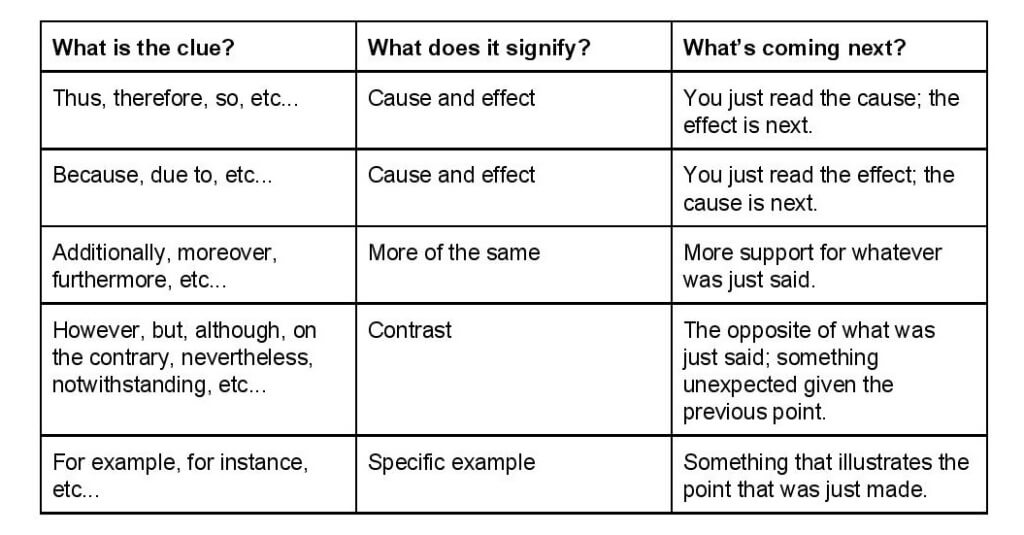I can’t tell you how many times I’ve heard people ask me, “How can I read LSAT passages faster?” It is, undoubtedly, the most sluggish section of the LSAT. The passages are usually pretty boring and the questions might remind you of high school English tests on A Tale of Two Cities, only harder.
Fortunately, there is a way to spice things up a bit.
Picture a house.
They have lots of doors and windows, and probably at least a few different rooms (unless you live in New York City). There are tables and chairs and beds and rugs and books and dishes and pictures and on and on and on. If someone asked you to walk through the house and memorize everything in it, you would probably be working on it for a long, long time. Fortunately, no one would ever ask you to memorize every object in a house because doing so would be a complete waste of time and effort.
However, what can be helpful to you is generally knowing how houses work. That way, you can find your way to a specific object if someone asks for it. For example, if you were in my house for the first time and I asked you to get me a paper towel, you would probably know to head to the kitchen and not the master bedroom. In this way, basic familiarity with the way houses work allows you to live in them more efficiently.
But how much of the house do you need to see in order to know what each room’s function is? If the house were fully decorated, it would be easy to find the kitchen or the living room or the bathroom. But what if the house were still under construction and only the walls and wiring and plumbing were there? Could you still tell which room you were in? Probably.
Houses are predictable.
If the room has lots of hookups for appliances, it’s probably the kitchen. If it’s very small and windowless, it might be a bathroom or a laundry room. If it’s upstairs and has windows, it’s likely a bedroom. In other words, you only need the frame of a house and a few interior details to make a pretty good prediction of what each room is. Why? Because you’ve been in a ton of houses and know how to read their clues.
How does this relate to Reading Comprehension?
Expecting you to memorize–or even pay attention to–every word of an obscure passage on a random topic is unreasonable and pointless. To do so, you would need a lot more than the roughly 9 minutes per passage you’re allotted. Moreover, you would be disappointed when the questions only asked you about a handful of different lines.
Instead, Reading Comprehension is testing your ability to trace the structure of a passage and then quickly analyze its details only when asked about them. With that in mind, your first reading of the passage should be like walking through a half-finished house. Look for clues in the layout of the passage that tell you where you are and what’s just ahead.
Examples of Clues
Obviously, this is not an extensive list. There are hundreds of linguistic indicators that could appear in an LSAT passage, just as there are millions of floorplans of houses in the world. However, the more houses you see, the more comfortable you become with patterns of design that persist through all or at least most houses. This is your goal with Reading Comprehension passages.
Mark up the passage.
As you read the passage, be on the lookout for indicators like those in the table above. Every time you find one, circle it and note in the margin what you think is coming next. This will slow you down at first, but as you familiarize yourself with the most common indicators and what they signify, you’ll notice that you begin to move through the passage much faster. Why? It’s not because you’re suddenly reading the words faster. Instead, it’s because you’re predicting what’s coming next and then simply skimming the text to confirm that you’re right rather than carefully reading each word to discover its meaning in a vacuum.
Cows and travel agents
Here’s an illustration of how that works. Imagine I have 2 flashcards, each with a single sentence on it. I am going to hold the first flashcard up for you to read in just a moment, and I want you to summarize what the sentence says.
Here’s the sentence: “The building next door to mine houses two companies, the larger of which is a financial document printing business and the smaller of which is a boutique travel company that specializes in European ski vacations.”
How long did that take you? Maybe 10 seconds?
Now I’m going to hold up the second flashcard, This time, I have a yes or no question for you: is there a brown cow on the farm down the street?
Here’s the sentence: “The farm down the street from my house specializes in unusual animals like alpacas, blue foot chickens, and ostriches, but they also have a few dozen ordinary brown cows and a couple donkeys.”
How long did that take you? Hopefully at least a few seconds less than the first sentence. While that might not seem like much, that adds up quickly over an entire passage that may consist of 20-30 sentences.
In conclusion…
Reading a passage and trying to summarize it takes time. A faster approach is to look for clues in the language, predict what the passage is about to say, and then skim it to confirm that your prediction was correct. Even if your prediction was incorrect, you’ll catch that when skimming and you can make note of it.
At first, this approach will slow you down because it’s new and uncomfortable. However, with regular practice, you’ll find that you can read a passage about twice as fast as you previously could. Moreover, you’ll start to notice that your understanding of the passage is deeper because you’re using your familiarity with rhetorical patterns to map out the passage’s argument just as you would the layout of a house you’re visiting for the first time.
P.S.
Did you know that A Tale of Two Cities is the best selling novel of all time? And we wonder why so many kids hate reading. 😉







Leave a Reply